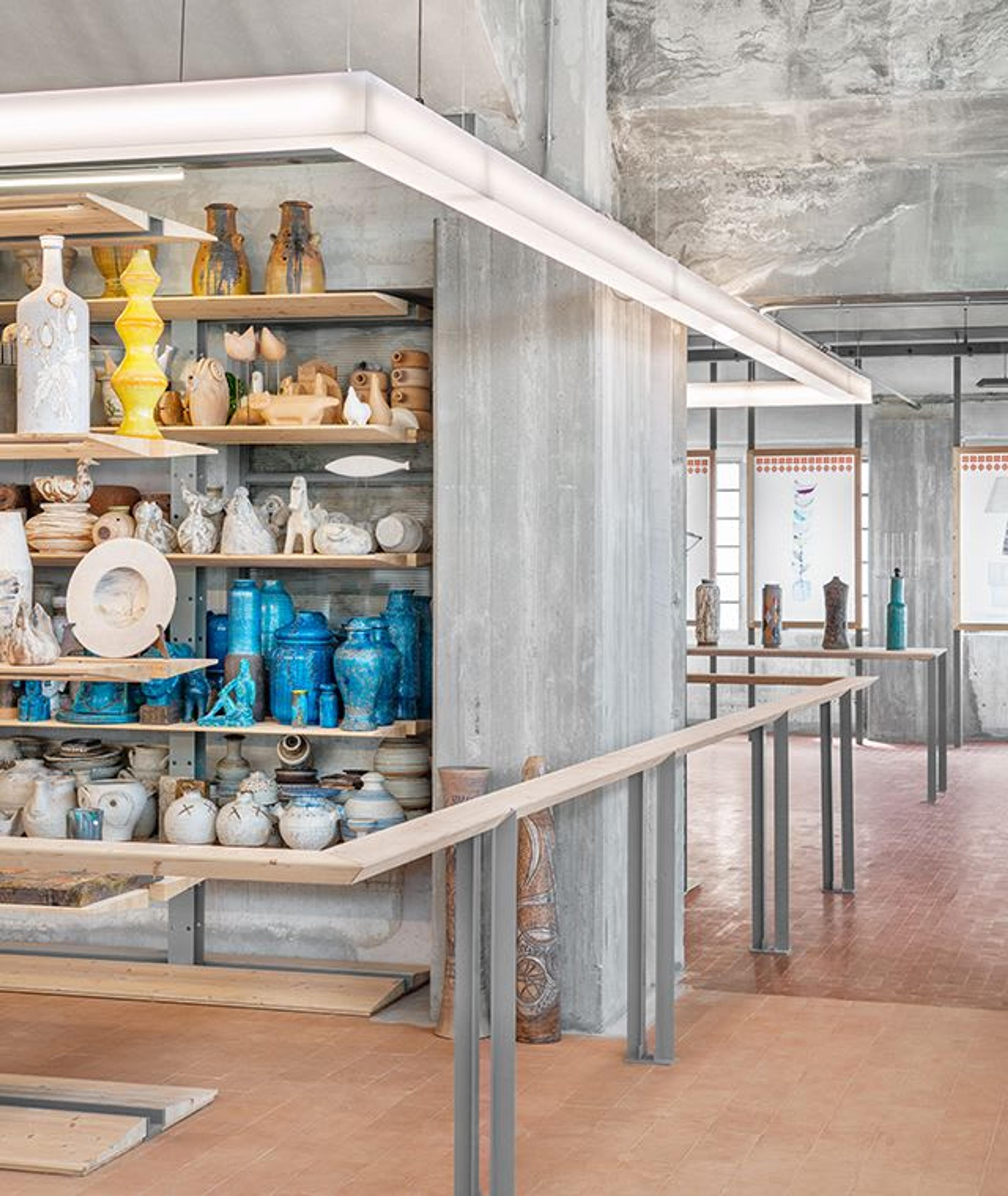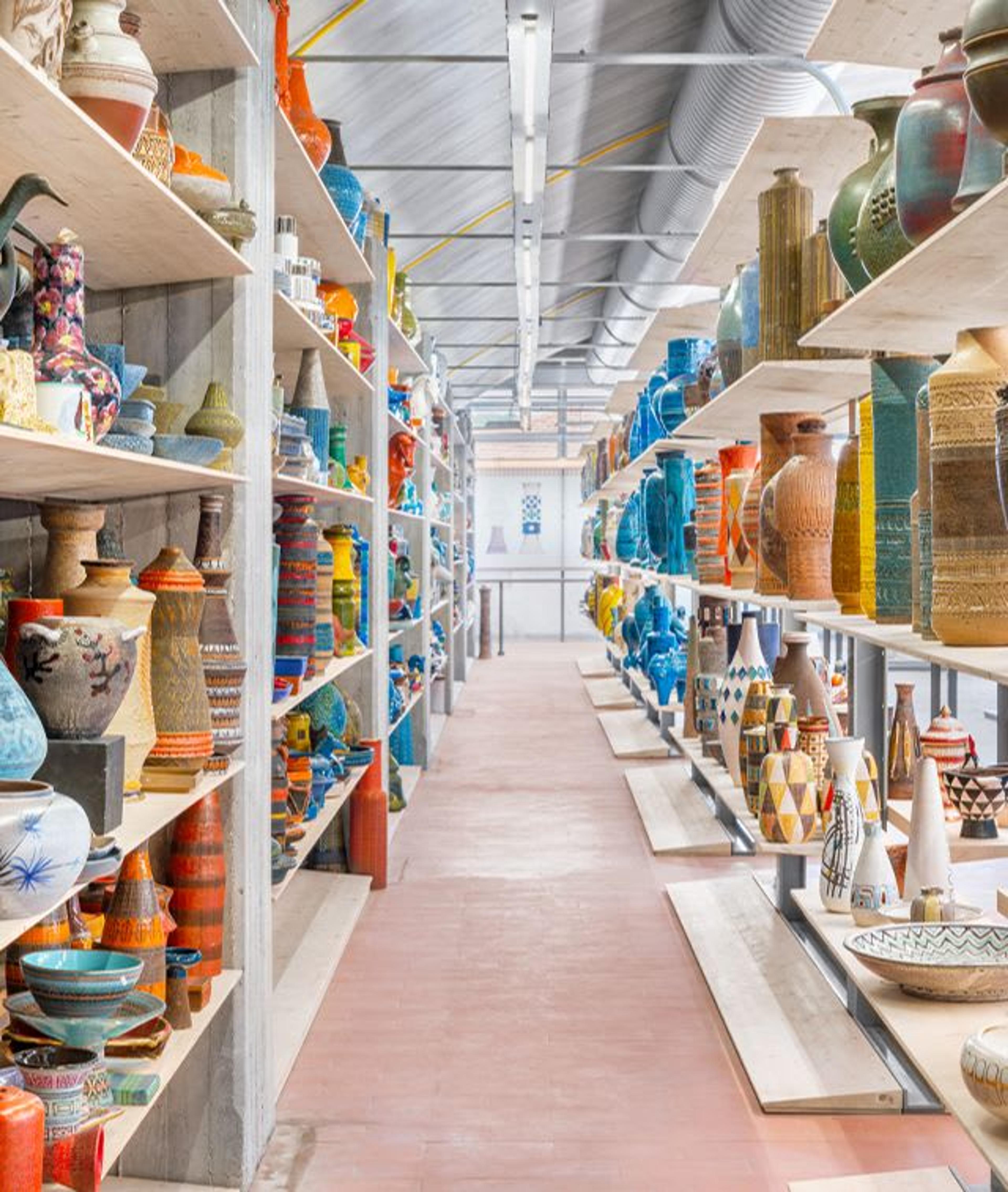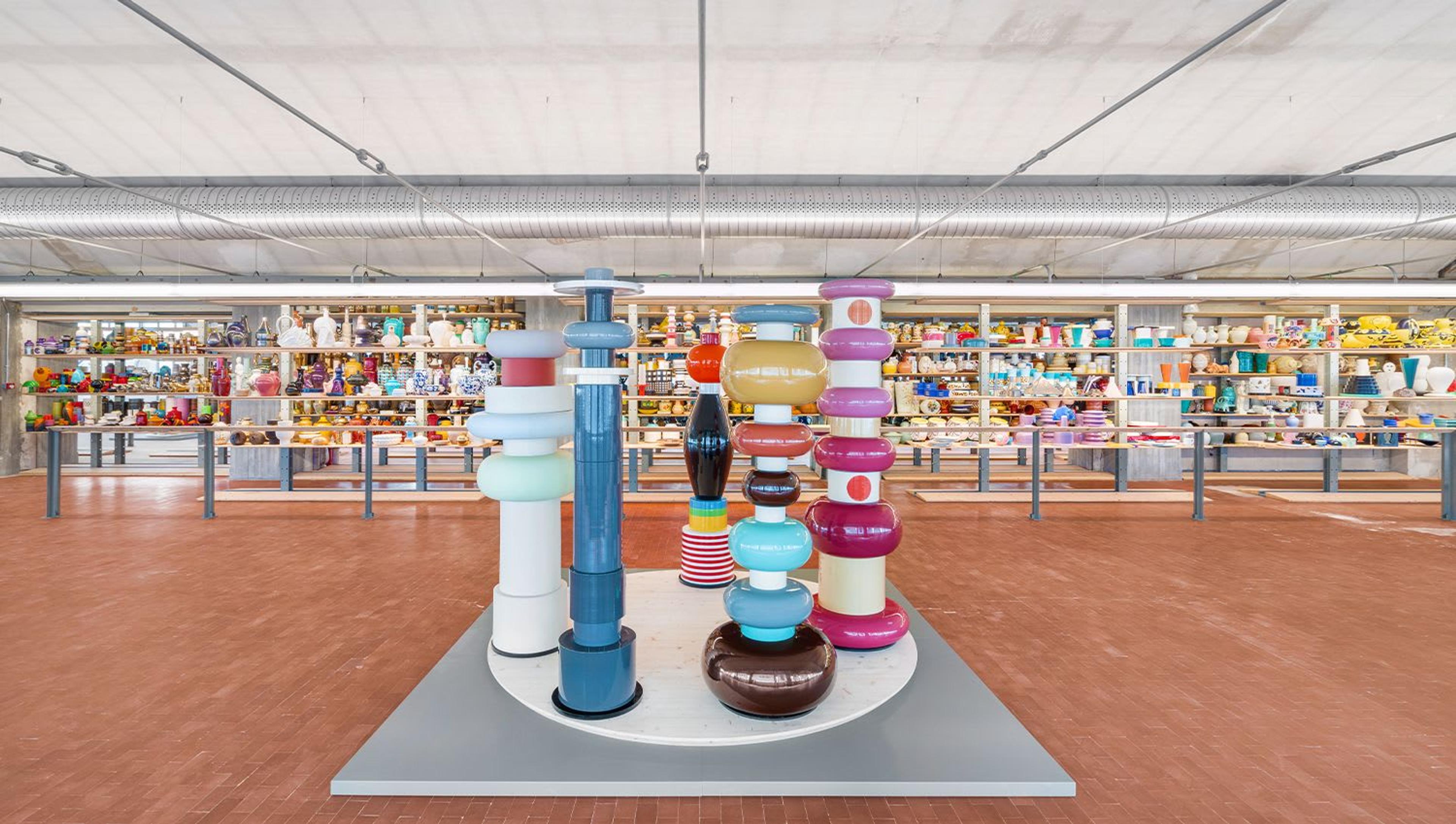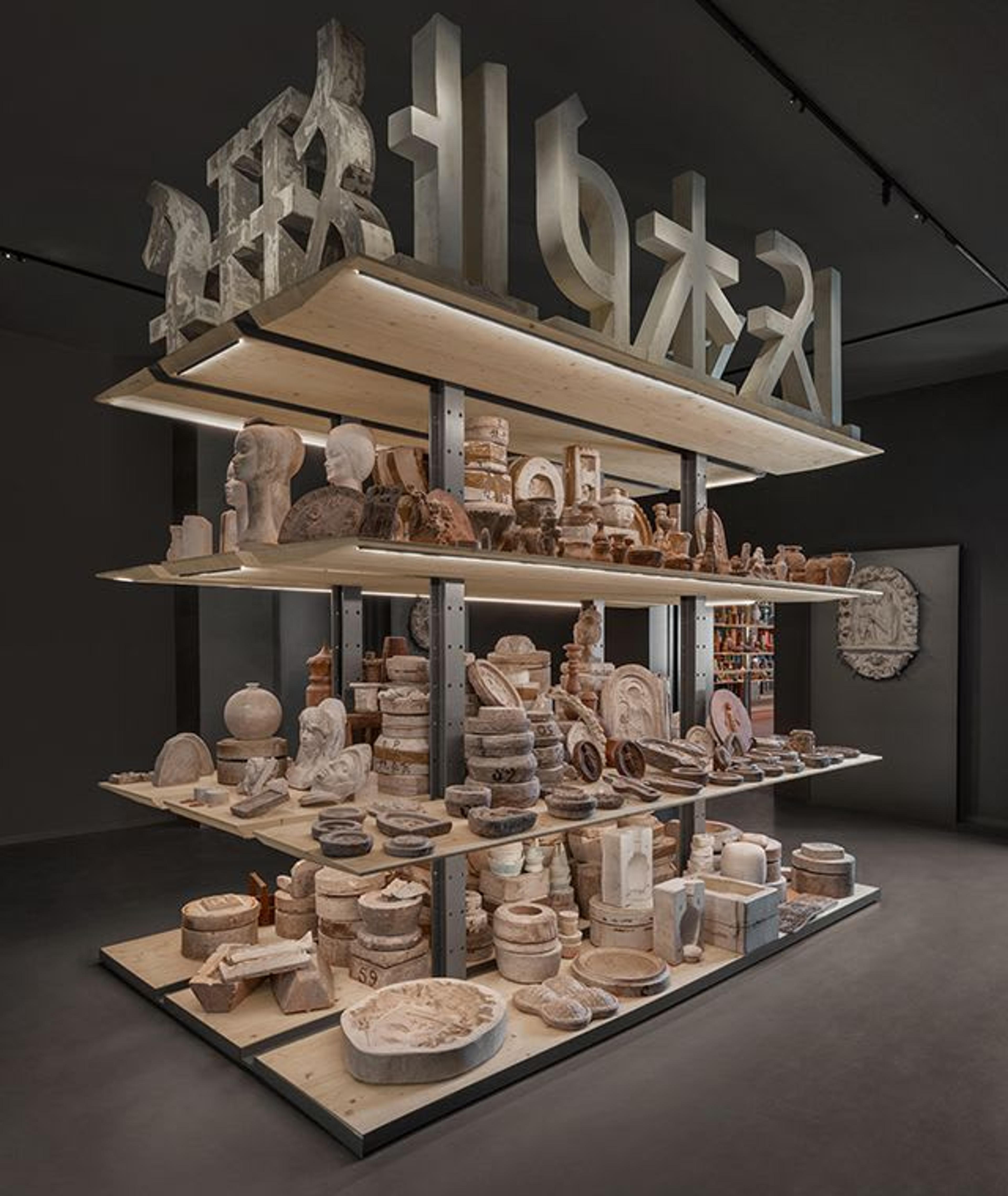
TOTEM BY KARIM RASHID - Colección SYMBOLIK
2195 EUR
Envío en 1-2 semanas

Eche un vistazo al Museo Bitossi, inaugurado para celebrar el centenario de la marca en Montelupo Fiorentino, Toscana. Las coloridas cerámicas del archivo Bitossi se convierten en piezas de arte que encarnan la herencia cultural y el saber hacer de la tradición artesanal italiana. Lea nuestra entrevista con la directora artística de Bitossi, Ginevra Bocini, para descubrir 100 años de colorida historia y hacer un viaje por el espacio.
El contenido de esta página ha sido traducido automáticamente. Visitar el sitio en ingles


Con motivo de su centenario, Bitossi fundó un museo corporativo diseñado y comisariado por el arquitecto Luca Cappelletti. Ubicado en el antiguo espacio de producción, el lugar de exposición de 1.500 metros cuadrados conserva la arquitectura industrial original. Caminando por el recorrido de la exposición, se puede admirar todo el archivo compuesto por 7.000 piezas: una selección de prototipos y formas, herramientas de trabajo, fotografías y dibujos reunidos en una pinacoteca.
El montaje es el resultado de la museografía y la investigación curatorial, alineando una variedad de piezas de colores en estanterías de madera de abeto específicas para el lugar. Creaciones excepcionales como Rimini de Aldo Londi, los Tótems de Ettore Sottsass o la obra Il dormiente con il coccodrillo de Mimmo Paladino destacan en el centro del espacio, destacando por su singularidad y dimensiones. La última estantería se mantiene vacía para dejar espacio a nuevas producciones y colaboraciones creativas.
La exposición es una experiencia de inmersión en la historia de la marca y su colaboración con multitud de iconos del diseño: Ettore Sottsass, Nathalie Du Pasquier, George J. Sowden, Marco Zanini, Christoph Radl, Michele De Lucchi, Karim Rashid, Arik Levy, Fabio Novembre.

¿Cómo se le ocurrió la idea de celebrar el centenario de Bitossi creando un museo y por qué eligió el interior de la antigua fábrica Bitossi como espacio de exposición?
Fue deseo de mi madre Cinzia Bitossi iniciar este proyecto hace muchos años. El objetivo era crear una colección que relatara la producción de la histórica fábrica fundada en 1921 por Guido Bitossi. La colección incluye más de 7.000 piezas de cerámica y archivos en papel -proyectos, dibujos, cuadernos de trabajo, documentos administrativos y comerciales, fotografías- que documentan un siglo de historia. Tras las primeras pequeñas exposiciones de todo el material recopilado, mi familia creó en 2008 la Fundación Vittoriano Bitossi para la salvaguarda, conservación y promoción cultural y científica del Archivo Industrial Bitossi.
Más tarde, promoví la idea de transformar el archivo en un museo utilizando la misma ubicación que sólo cinco años antes había albergado parte de la producción manufacturera. Quería que la colección histórica permaneciera justo donde se había creado realmente: un espacio recuperado como "arqueología industrial" que se convierte en una historia en sí misma. Es un proyecto único que documenta el pasado y el presente de una empresa que celebra su primer centenario en 2021. El montaje fue diseñado por el arquitecto Luca Cippelletti, del estudio ArchiT de Milán, mientras que la iluminación corrió a cargo del arquitecto veneciano Alberto Pasetti Bombardella.
Bitossi encarna un patrimonio y un saber hacer específicos que surgen de la fusión del diseño, el arte y la artesanía. ¿Cómo comunica el Museo Bitossi la identidad de su marca?
El museo/archivo muestra nuestra identidad a través de los propios productos, que se convierten a la vez en documentos y pruebas del proceso y de todo lo que gira en torno a su producción: desde las materias primas hasta la experiencia humana y profesional, desde el marketing hasta las ventas. Todo sirve como comunicación estratégica vinculada a la marca, como síntesis de su historia, memoria e investigación proyectada hacia el futuro.
El Archivo representa la identidad y la historia de nuestra empresa, de un emprendimiento italiano: es una historia de renovación y valoración de una cultura empresarial que conecta la historia con el futuro.

2195 EUR
Envío en 1-2 semanas

880 EUR
Envío en 1-2 semanas

880 EUR
Envío en 1-2 semanas

710 EUR
Envío en 1-2 semanas

710 EUR
Envío en 1-2 semanas

710 EUR
Envío en 1-2 semanas

880 EUR
Envío en 1-2 semanas

2195 EUR
Envío en 1-2 semanas

2195 EUR
Envío en 1-2 semanas


Laspiezas de Bitossi creadas en colaboración con diseñadores pueden considerarse obras de arte. ¿Cuál cree que es el objeto más icónico de su archivo y cómo presenta estas piezas especiales a lo largo del itinerario de la exposición?
Hay innumerables elementos icónicos presentados en el itinerario de la exposición, creados por el director histórico de Bitossi, Aldo Londi, el arquitecto Ettore Sottsass y muchos otros.
El icono por excelencia de Bitossi es la legendaria serie "Rimini Blu", creada por Londi en 1959 y que desde entonces nunca ha dejado de fabricarse, con millones de piezas vendidas en todo el mundo. Fue creada para un cliente estadounidense, un homenaje al color del mar azul profundo, a la costa de Romaña -que, en aquella época, evocaba la imagen de "la buena vida y la dolce vita italiana" para el turismo internacional-, un lugar encantador sobre todo para los estadounidenses que lo incluían en el Grand Tour italiano. Fue el lugar celebrado por Fred Buscaglione en la canción "Remember Rimini", lanzada ese mismo año. La exposición tiene toda una estantería dedicada a este color azul persa, con elementos muy insólitos y escultóricos.
Otro icono es la serie en blanco y negro del arquitecto Ettore Sottsass, creada en 1959 para la exposición de la Galería Il Sestante de Milán y desde entonces producida con regularidad. Sottsass había establecido una relación especial tanto con mi familia como con Aldo Londi, por lo que quisimos dedicarle diferentes secciones en el Archivo: una ambientación en la entrada con piezas de colecciones especiales y una muestra a lo largo del recorrido de la exposición.

315 EUR
Envío en 1-2 semanas

340 EUR
Envío en 1-2 semanas

550 EUR
Envío en 1-2 semanas

550 EUR
Envío en 1-2 semanas

465 EUR
Envío en 1-2 semanas

450 EUR
Envío en 1-2 semanas

560 EUR
Envío en 1-2 semanas

465 EUR
Envío en 1-2 semanas

270 EUR
Envío en 1-2 semanas
Loscolores vivos y atrevidos son los elementos distintivos de Bitossi. ¿Qué papel desempeña el color en su producción artística y cuál es su poder emocional en la percepción del espacio?
En 1947 se construyó un laboratorio químico dentro de la fábrica, que en pocos años se convirtió en la fábrica de pinturas cerámicas Colorobbia. Londi reconoció su enorme potencial como lugar de experimentación para desarrollar cada vez más colores para productos comerciales.
Uno percibe el poderoso impacto emocional del color nada más poner un pie en el Archivo: en el primer pasillo hay una panorámica que abarca desde los años veinte hasta finales de los sesenta. Así pues, no sólo el color, sino también el estilo está en constante evolución.

¿Cuál ha sido la evolución de su producción artística en sus 100 años de historia?
De la loza a la cerámica esmaltada, de la mayólica al barro cocido con texturas imprevisibles: pintado, grabado, rayado, graffitte, bugnato, cariolato, etc. Es un mundo hecho de estudio continuo, investigación y una inmensa pasión que se ha transmitido durante generaciones. Represento a la cuarta generación de la familia en la dirección artística de la empresa y estoy muy orgulloso de mi pasado.
¿Cómo equilibran innovación y tradición y qué planes tienen para el futuro?
El Archivo representa la identidad y la historia de nuestra empresa, de una aventura italiana: es una historia de renovación y valoración de una cultura empresarial que conecta la historia con el futuro. Podría comparar el Archivo con una tierra fértil: transmite su saber hacer a través de una evolución técnica y estilística, y artistas y diseñadores se inspiran en él para crear nuevas colecciones, ahondando en un siglo de historia de los diseñadores que han colaborado con Bitossi.
Todas nuestras colecciones de catálogo son fruto de una sólida tradición artesanal. Hoy en día, seguimos trabajando como hace un siglo: cada nueva colección supone un reto hasta conseguir el resultado óptimo, y nunca descuidamos el elemento funcional, que, con razón, nunca debe pasarse por alto. Hay un aspecto escultórico y material muy importante en el proceso artesanal que está ligado a la investigación de colores de esmaltes y cristalinos con acabados brillantes o mates.

990 EUR
Envío en 1-2 semanas

640 EUR
Envío en 1-2 semanas

990 EUR
Envío en 1-2 semanas

910 EUR
Envío en 1-2 semanas

830 EUR
Envío en 1-2 semanas

910 EUR
Envío en 1-2 semanas

800 EUR
Envío en 1-2 semanas

990 EUR
Envío en 1-2 semanas

585 EUR
Envío en 1-2 semanas

1200 EUR
Envío en 1-2 semanas

550 EUR
Envío en 1-2 semanas

990 EUR
Envío en 1-2 semanas

1305 EUR
Envío en 1-2 semanas

585 EUR
Envío en 1-2 semanas

580 EUR
Envío en 1-2 semanas